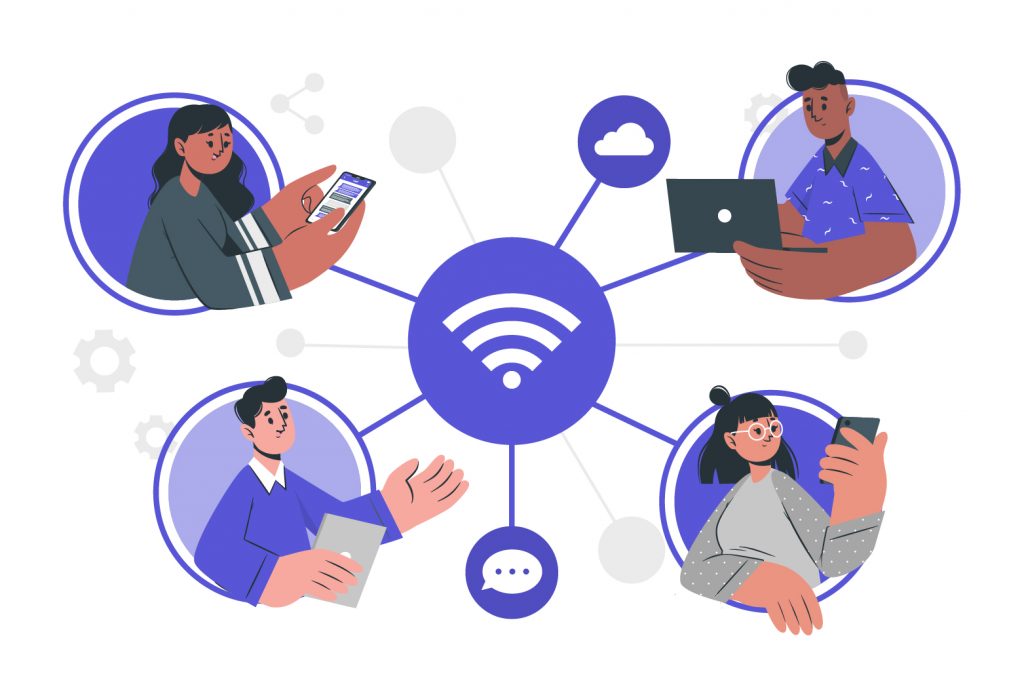Mobile Workforce Management: A Guide to Handling Challenges
The mobile workforce accounts for approximately 59.4% of the total global employment. They’re field workers, registered nurses, drivers, telecommuters, etc. — crucial people in flexible businesses. They ensure services aren’t restricted to one location or at a fixed time.
However, because these employees aren’t always present at a central workplace, it’s harder to oversee them and provide them the support they need. For effective mobile workforce management, you need the right tools and strategies.
What is mobile workforce management?
Mobile workforce management includes the strategies and tools (services, apps, resources, etc.) that businesses use to manage their non-desk workforce. The purpose is to help workers and employers communicate and work together effectively.
Challenges of mobile workforce management (and the solutions)
Because non-desk workers are away from supervisors most of the time, there are certain challenges that management needs to prepare for.
Employee disengagement
Disengaged employees are costly. They’re more likely to leave, and even if they don’t, they lack the morale to do their work well. That’s why businesses have been trying to prevent employee disengagement at all costs.
Disengagement is more likely to happen with mobile workers as they’re scattered in different places and don’t often meet with coworkers. It’s more difficult for them to feel like a part of the team and engage in the workplace.

To engage your mobile team, you can:
- Socialize online: Use online tools to organize group chats and virtual activities so your mobile workforce can get to know each other. These activities help employees feel like a part of the team and they can also form the bond that is necessary for when they meet in person.
- Recognize employees: It’s hard to feel seen and valued when your work is not visible to management every day and you’re not always present in a central workplace. To make workers know you don’t overlook their efforts, recognize them for their good work. Do it publicly on a group messaging app or the bulletin board of a workforce management app. Give them rewards or funny award titles. Create an employee recognition program such as employee of the month.
- Organize in-person events: Events such as all-hands meetings, drinks after work, celebrations, or company retreats where employees meet in person and work together are great opportunities for connection.
Keep your team engaged and updated using the Camelo app. Learn more here →.
Limited access to information and tools
Unlike office workers, mobile employees can’t always walk to a bulletin board, a filing cabinet, or a supply room to find the documents and tools they need for their work.
To help your workforce access the resources they need, you can:
- Create an online, mobile-friendly knowledge base: It allows workers who are actively on the move to access necessary information anytime. The knowledge base should include procedure handbooks, company policies, announcements, essential documents, contact information, etc.
- Provide tools: This ensures employees have adequate resources to complete their work. For example, you can provide smartphones so workers can access an internal knowledge base or contact coworkers.

- Use mobile workforce management apps: For workers who travel a lot, a mobile app can help them perform basic tasks or find crucial information anywhere, especially when they don’t have access to a computer. Plus, these apps help you manage different aspects of your employees:
- Work schedules: Scheduling software help you manage employee schedules based on their available time, positions, coverage, etc. You can avoid and solve schedule conflicts more quickly. Employees can also receive details of their shifts so they know when to go to work.
- Work hours and attendance: Employees can clock in and out of their shifts using an app, and this app records their total work hours and work location. You’ll also get real-time updates if someone is late or doesn’t show up at work.
- Tasks: Task management apps help you and your workforce stay on track with tasks. You can assign tasks to employees and they get notified. It’s easy to set deadlines and attach documents, get updates on progress, and discuss tasks.
- Secure and update tools: To keep the privacy of information and the safety of workers, upgrade and secure your tools to ensure your staff members have reliable resources at hand. Select secure software so you don’t have to worry about data breaches. Check if the tools and equipment are in good condition periodically.
Communication barriers
Communication among mobile workers mostly happens via calls, emails, or text messages. It’s hard to convey and interpret what someone wants to say via screens or voices.
Besides, mobile workers aren’t always available to respond to a call or email right away. You can’t randomly stop by their desk and talk to them.

To maintain communication among mobile workers, you can:
- Prioritize mobile communication: Chats, video calls, and emails on smartphones make sure staff members can check in, discuss work, and engage with everyone from almost anywhere.
- Keep communication asynchronous: Let workers receive and respond to messages and emails on their own time, as they may not be able to reply right away. Async communication also gives workers ample time to give more thoughtful responses.
- Create a central place for workplace communication: You can create an online chat channel where everyone can receive important announcements, company news, documents, etc. This keeps your workforce updated and in touch.
- Provide a personnel directory: If workers need to contact someone at work, they can use this directory to find the contact information of others.
- Have real-time chat channels: If anyone wants to reach out for support or faster responses from management or workmates, they can hop onto these channels.
- Organize in-person discussions and meetings: Although you can discuss anything via Zoom calls or emails, regular in-person check-ins and meetings help maintain the trust and bond of workplace relationships. Participants are more attentive as they’re not distracted by kids, pets, or housemates. Communication is clearer as it’s easier to pick up non-verbal cues and body language in real life.
- Get feedback and recommendations from workers: Use their ideas to improve your system and practices. If suggested changes aren’t possible, discuss the reason why and the alternative solutions.
Difficulties in supervision and support

It’s challenging to supervise and support people who work far away from you. But with the right tools, you can still oversee employee progress and give them the necessary resources.
- Use digital workforce management tools: These tools can give you specific metrics so you know how your workforce is doing. For example, time tracking apps let you know if employees have started their work on time or have arrived at the right work location. By periodically reviewing hours worked, profit, survey results, etc. so you can strengthen your workforce and plan for what’s coming next.
- Set up specific metrics to track progress: Set deadlines and milestones. Create checklists. Set a place where workers can report their results and progress.
- Provide detailed job requests and checklists: These allow workers to know what jobs they need to complete and supervisors can also keep track of how much work has been done.
- Conduct surveys and polls: Get workers’ opinions on how you can better support them.
- Provide training and career growth plans: Equip your employees with new skills and empower them to grow with clear directions.
Unpredictable environments
Mobile workers often work in unpredictable environments. A driver may be late due to bad weather. A sales rep has to deal with clients of different backgrounds and personalities. An emergency worker has to respond immediately to alerts.
To provide fast and convenient support for employees in unpredictable situations, you can:
- Provide contact directory: If someone needs to contact management or coworkers for support, they can use this directory to find phone numbers or emails.
- Use apps with push notifications: Push notifications are handy for workers in emergency situations or when they need reminders. With notifications, those in need can get fast assistance and receive updates about critical events.
- Provide materials in print: A small printed handbook of workplace guidelines or a contact list would be helpful in case workers have no access to power or internet.

Use the right tools and strategies for mobile workforce management
Mobile workforce management can be challenging as employees aren’t always under the same roof as you. The right tools and strategies can help you support and manage them more effectively.
Camelo can help you:
- Keep track of work schedules, worked hours, and attendance of mobile workers.
- Announce important information and contact anyone in your team with messaging.
- Get specific metrics that give you insights into how your mobile workforce is doing and how you can improve.





